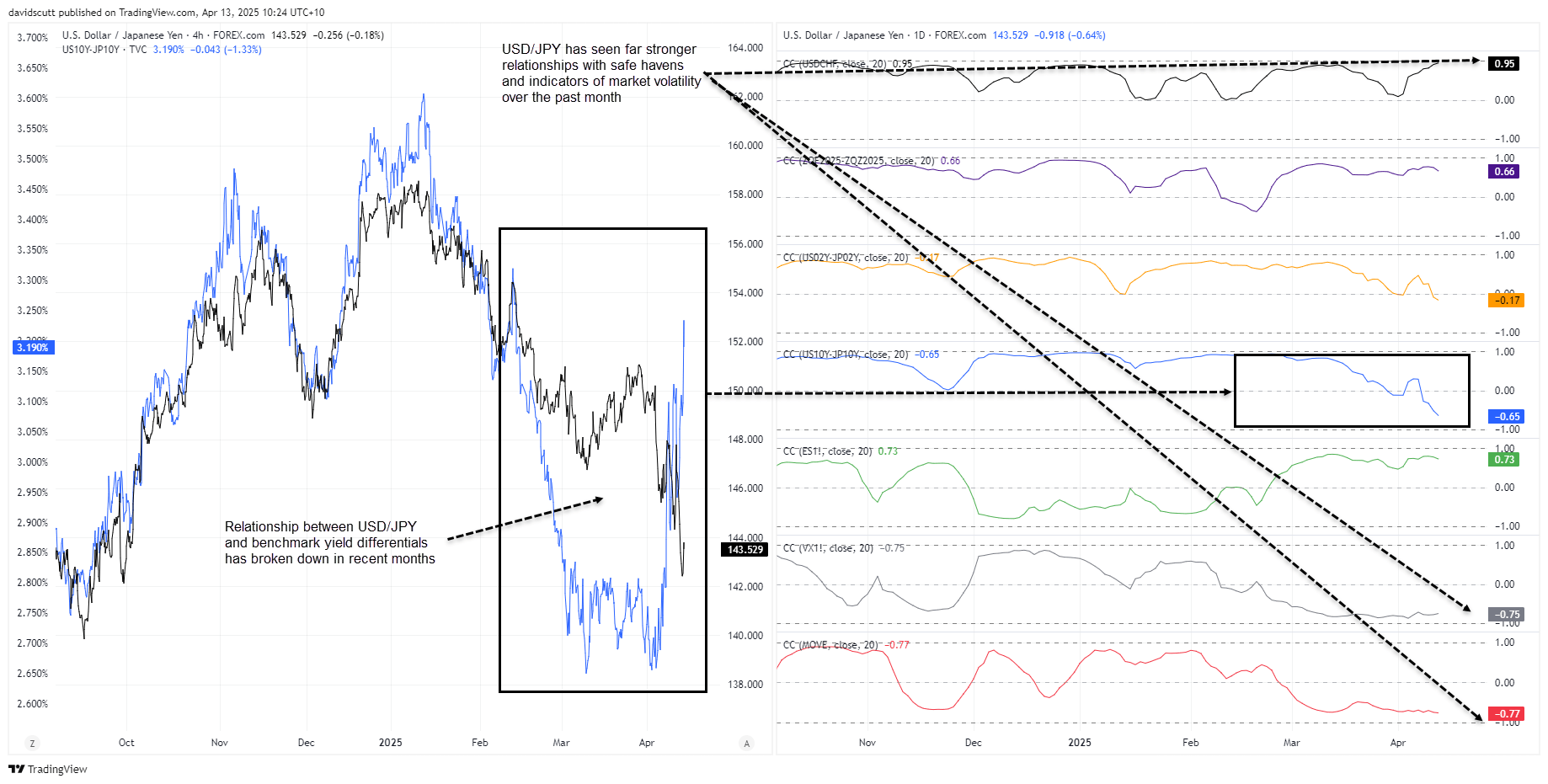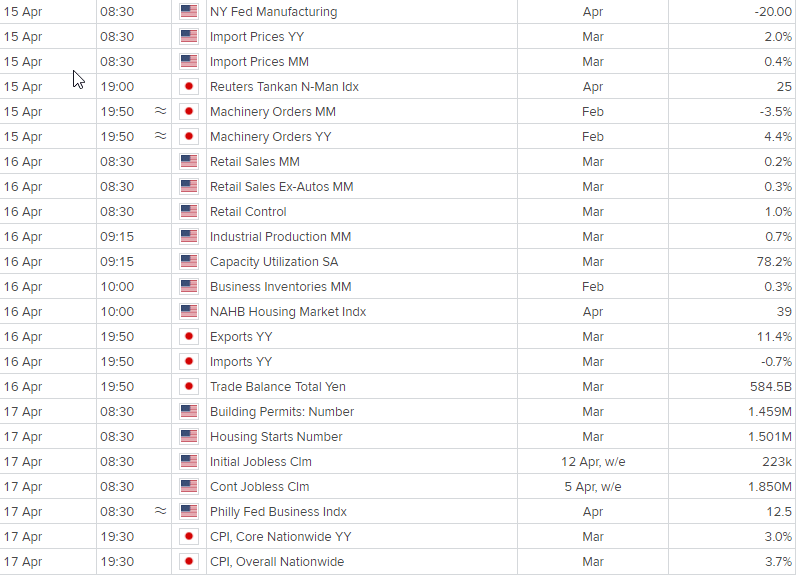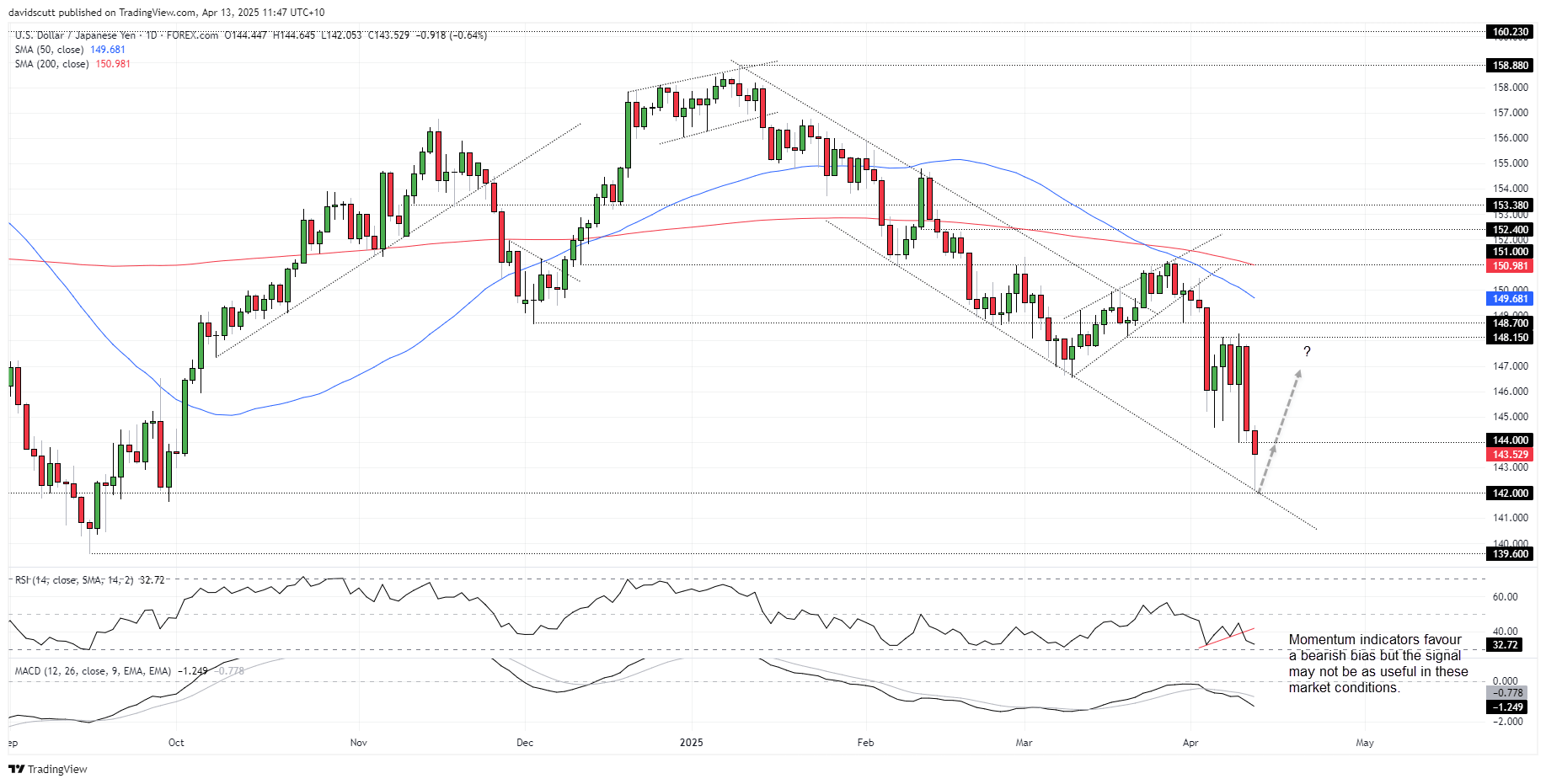- USD/JPY relationship with interest rate differentials flipped
- Yen trading as a classic safe haven once again
- US dollar now seen as a risk asset, not a refuge
- Trade war headlines, positioning continue to drive intraday moves
- Macro data and central bank talk taking a back seat
Donald Trump’s trade war has upended the long-standing relationship between interest rate differentials and USD/JPY movements, with higher US Treasury yields now being taken as evidence of capital flight rather than a reason to deploy capital into US dollar assets.
With the dollar’s safe-haven status temporarily invalidated due to heightened uncertainty created by Trump’s erratic tariff policy, USD/JPY has effectively become a proxy for investor sentiment, placing greater emphasis on political headlines and the performance of riskier asset classes rather than economic data and central bank speeches to drive direction.
While the revelation that Trump will exclude some electronic components from tariffs announced late Friday will likely see USD/JPY launch higher when trade resumes on Monday, whether the move can be sustained will likely depend on whether trade tensions with major partners can be permanently resolved. In the near term, that appears unlikely.
USD Seen as Risk Asset
The strong relationship between interest rate differentials and the USD/JPY direction has been obliterated over the past month, with the correlation coefficient between US 10-Year and Japanese benchmark 10-year bond yields shifting from near 1 to -0.65 over the period. You can see the unravelling of the relationship clearly in the left-hand pane of the chart below, with USD/JPY sinking even as yield differentials surged in favour of the United States.
Source: TradingView
What’s truly driving USD/JPY movements now is evident in its relationship with other assets over the same period. With the Swiss franc, the correlation coefficient score has been nearly perfect at 0.95. With implied U.S. bond and equity market volatility measures, the inverse relationships have also been strong, with scores of -0.77 and -0.75, respectively.
Put simply, the Japanese yen is being treated as a safe haven, with the U.S. dollar now viewed as a risk asset. It’s difficult to see that changing anytime soon, meaning traditional dollar-yen drivers such as economic data and central bank commentary will likely remain distant secondary considerations for traders in the week ahead.
Known Event Risk Takes Backseat

Source: Refinitv (Times U.S. ET)
While it is a busy week for economic data, most of the scheduled releases screen as either noisy, outdated, or irrelevant, given the rapidly shifting macroeconomic environment. The only events that could generate volatility are U.S. retail sales on Wednesday and Japanese consumer price inflation data on Friday.
On retail sales, any further evidence that household spending is slowing or declining outright will fan U.S. recession fears, likely resulting in a renewed downside in USD/JPY if that were to eventuate. An increase of 1.3% is expected due to front-loading of consumer purchases ahead of the ‘Liberation Day’ tariff announcement in early April. If there was no front-loading, it would be taken as a very dire sign for the largest part of the U.S. economy: households.
In regards to Japan’s inflation report, with markets having removed expectations for further rate increases from the Bank of Japan this year, a soft outcome may actually generate the largest reaction, adding to the risk that the bank may need to flip towards easing policy given the volatile international trade environment. A hot reading could easily be dismissed as old news, likely limiting its potential to spark yen strength.
Source: Refinitv (Times U.S. ET)
Like the economic calendar, the Federal Reserve speaker schedule also screens as largely inconsequential, with FOMC members—like us—grappling with major policy shifts that often occur multiple times a day, let alone in a week.
If there is to be a point of interest, it may come from any commentary on how the Fed might respond if recent volatility in the U.S. Treasury market were to escalate, impacting the functioning of the financial system and borrowing rates for the private sector.
USD/JPY Biased Higher Near-Term
Source: TradingView
USD/JPY rebounded strongly on Friday after failing to break the intersection of horizontal and downtrend support around 142.00, signalling we may have seen a near-term bottom. With news breaking after market close on Friday that Donald Trump will grant tariff exemptions on some electronic components entering the country, it’s likely we’ll see USD/JPY jump back above former minor support at 144.00 when trade resumes Monday, putting a potential retest of 148.15 or 148.70 on the table if risk really starts to rip.
Above, the 50- and 200-day moving averages are the levels to watch, along with 151.00. Below 142.00, 139.60 is the next level to monitor, coinciding with the swing low seen in September 2024.
Momentum indicators favour downside with RSI (14) resuming its move lower after breaking the minor uptrend it was sitting in, while MACD is confirming the bearish signal having crossed over from above while in negative territory earlier in the month. Normally, this momentum picture would favour selling rallies and downside breaks, but the signal is unlikely to be as reliable in these headline-driven markets.

